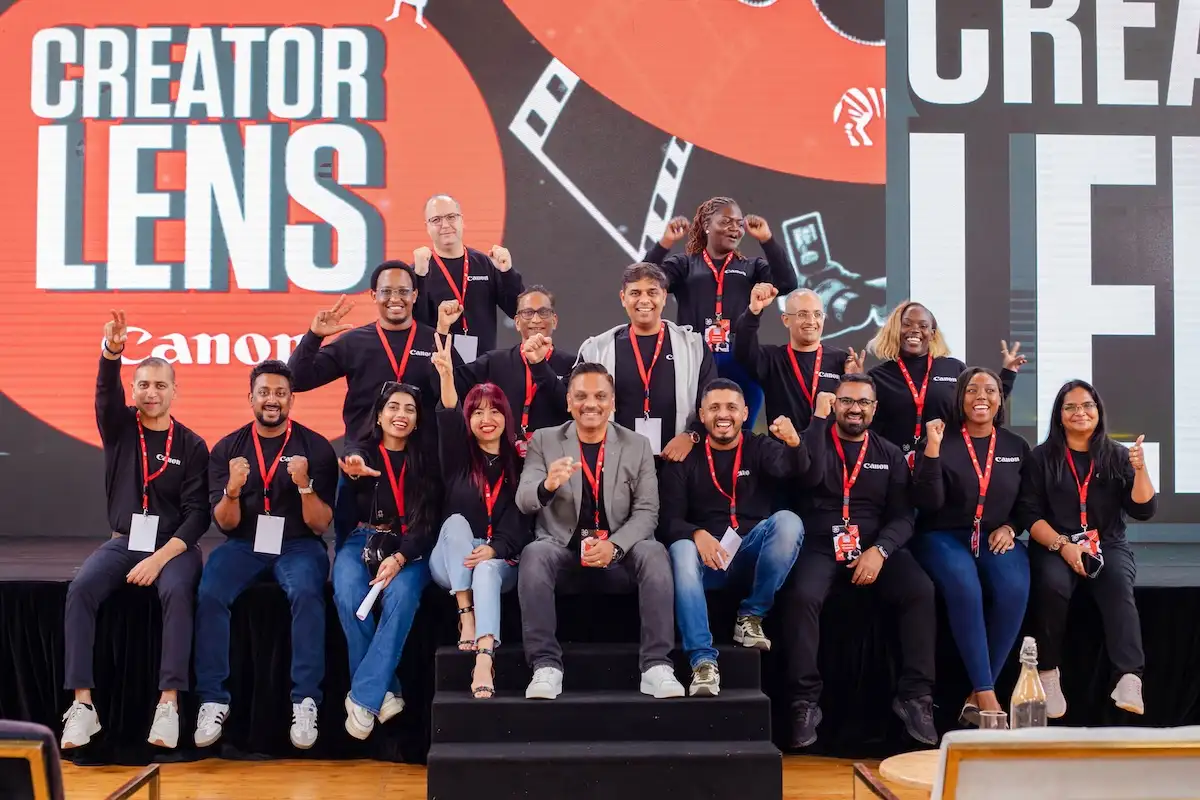Canon held its first Creator Lens event in Nairobi Yesterday. The event brought together creators from across the region for hands-on product sessions, panel discussions and practical demonstrations led by leading Kenyan and Tanzanian creatives.
Speaking to TechArena, Rashad Ghani, B2C Business Unit Director at Canon Central and North Africa, explained why now was the right time to invest in a creator-focused platform.
“We are living in a time where content carries so much importance. Everyone is creating something, but very few have access to spaces where they can learn, improve, and collaborate,” he said. Ghani added that Canon wanted to give back to the community by bringing creators together and allowing established voices to share real experiences that can guide the next wave of talent.
Africa’s demographics also played a major role. Ghani noted that the continent hosts the world’s youngest population and East Africa in particular stands out because of its high mobile penetration. With digital expression on the rise, selecting Kenya as the first home of Creator Lens felt natural for Canon.
“This is only the beginning. We will take the event to Nigeria and Morocco, and we might return to Kenya for a second edition. Our goal is to create a space where learning and collaboration help people grow and position African creators on the global stage,” Ghani said.
At the event, Canon set up four experience zones where creators could experiment with the company’s newest video tools.
Podcast Zone
Led by TV and radio host Dr. Ofweneke, this section showcased Canon’s video lineup for podcasters, including the EOS C80, R5 Mark II, C50, and the EOS R50V. It also highlighted Canon’s Live Switcher app.
Fashion and Lifestyle Zone
Fashion creator Joy Kendi led hands-on sessions featuring compact devices like the PowerShot V10 and EOS R50V, along with accessories designed for vertical shooting and livestreaming.
Wedding Zone
Wedding filmmaker Gabriel Kasha demonstrated how cameras like the R5 Mark II and C50 fit into wedding workflows, focusing on 4K Dual Base ISO and log color grading.
Cinematic Zone
Wildlife filmmaker Hans Ngoteya showed what Canon’s cinema lineup can do for wildlife and nature productions, with demonstrations using the C50, C80, C400, and various cinema lenses.
Alongside the zones, Creator Lens featured competitions, talks, and live shooting sessions. Participants created videos during the event, and selected winners will earn Canon prizes and mentorship opportunities.
Ghani also addressed the question many creators ask, why Canon is suddenly placing so much emphasis on video.
“Canon has always been seen as a photography brand. When people talk about stills, they often mention Canon first. But in video, we are not perceived as strongly despite having the capabilities,” he said.
Ghani explained that the shift is driven by both demand and product innovation. Creators today rely heavily on video, and Canon wants to meet them where they are. New products, such as the EOS C50 with open gate recording, allow creators to capture footage and later extract both video and stills from a single frame. For Canon, this is part of an effort to simplify workflows while giving creators more flexibility.
“You will see more video-focused products coming into the market. We are redesigning our lineup to make it more accessible and user friendly for content creators,” he said.
During the conversation, Ghani emphasized that Canon views all African regions as equally important. Although Nigeria has a strong filmmaking industry, East African creators have shown remarkable growth in online content and digital storytelling.
“There is massive potential here. Creators in Tanzania and Kenya are producing work that is reaching global audiences. They are hungry to grow, and we want to empower them,” he said.
Ghani noted that Canon supports creators at every stage, from entry-level vlog cameras to professional cinema systems.
“We guide creators throughout the journey. Someone moving from a smartphone will not jump straight to a full-frame camera. They can start with something like the V10, then grow into the M50, and later move to higher-end devices,” he said.
Canon’s guidance also extends to masterclasses. At Creator Lens, sessions covered lenses, lighting, shooting techniques and real-world practices used by professionals in the field.
The company runs multiple learning platforms, including Canon Academy, Canon Junior Academy and Canon Video Academy. Some programs are exclusive to Canon users, but many are open to the public through online registration.
These platforms cover everything from photography basics to advanced video editing and post-production. Canon plans to expand these sessions after the event, focusing on areas that creators identify as most important.
“If we feel that creators need more training in editing or post-production, we will create those sessions. We listen, then adapt,” Ghani said.
Phones vs Cameras
Ghani clarified that Canon is not trying to push creators away from phones. Instead, the company sees content creation as a journey where tools evolve over time.
“We are not asking anyone to stop using their phone. People start with what they have. As their needs grow, they will naturally upgrade or combine tools to achieve better results,” he said.
Canon’s products integrate tightly with mobile devices and this allows creators to transfer files instantly and post content directly from their phones. According to Ghani, the goal is to help creators improve the visual quality of their stories, not to force them into abandoning their current workflows.
Canon intends to expand Creator Lens across Africa. By working with creators at every level, from macro to nano influencers. The company hopes to help more people transition from mobile-only setups to hybrid or dedicated camera systems.
For these and more stories, follow us on X (Formerly Twitter), Facebook, LinkedIn and Telegram. You can also send us tips or just reach out on info@techarena.co.ke.

